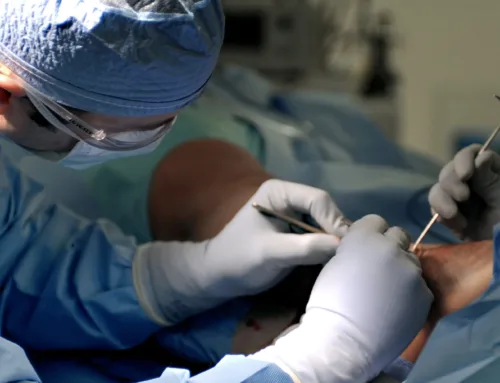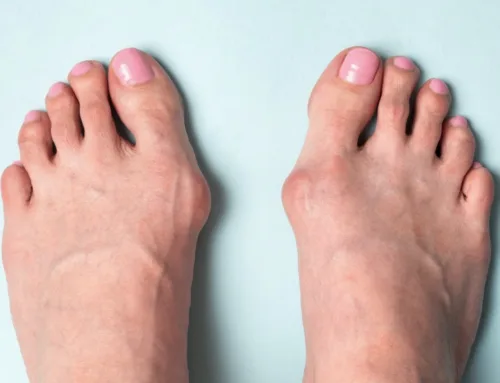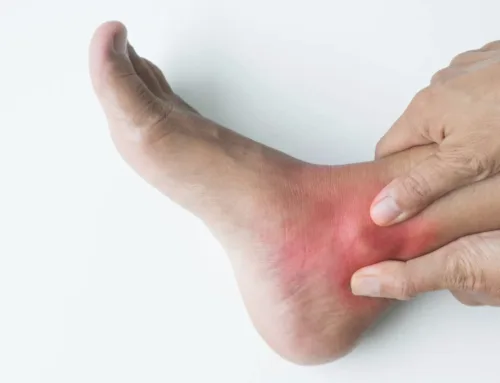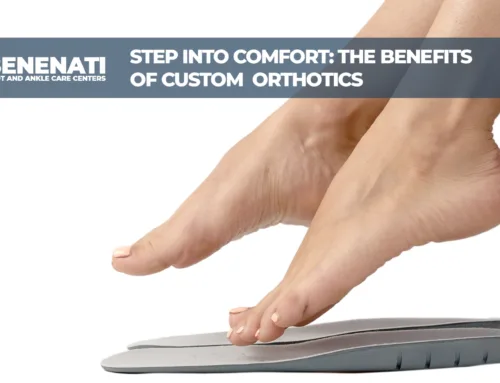Foot Deformities: Not Just Cosmetic, But Functional Concerns
Understanding Foot Deformities
Foot deformities refer to abnormal changes in the structure of the foot. These may be congenital (present at birth) or acquired over time due to injury, arthritis, or biomechanical issues. While some deformities might seem minor, they can significantly affect your balance, gait, and quality of life if left untreated.
At Benenati Foot & Ankle Care Centers, we evaluate and treat various deformities with a focus on improving both function and comfort.
Common Types of Foot Deformities
Several deformities can affect the structure and health of the feet:
- Bunions (Hallux Valgus): A bony bump at the base of the big toe, causing it to lean toward the second toe.
- Hammertoes: Abnormal bend in the middle joint of a toe, usually the second, third, or fourth toe.
- Claw Toes: Toes that bend into a claw-like position, often caused by nerve or muscle disorders.
- Flat Feet: Lack of arch in the foot, which can lead to overpronation and pain.
- High Arches (Cavus Foot): Excessive arch that places strain on the ball and heel of the foot.
These deformities can lead to discomfort, shoe-fitting problems, corns, calluses, and even secondary issues in the knees, hips, or back.
What Causes Foot Deformities?
The causes vary but may include:
- Genetics and inherited foot structure
- Ill-fitting shoes or high heels
- Injury or trauma
- Arthritis or joint diseases
- Muscle imbalances or nerve damage
Understanding the underlying cause is essential for selecting the best treatment approach.
When to Seek Medical Attention
Many people live with foot deformities for years, believing pain or changes in foot shape are a normal part of aging. However, medical evaluation is advised if you experience:
- Persistent or worsening pain
- Redness, swelling, or irritation
- Difficulty walking or wearing shoes
- Visible misalignment of toes or joints
These symptoms indicate a need for professional diagnosis and possibly corrective treatment.
Diagnostic and Evaluation Process
At Benenati, we perform a comprehensive assessment including:
- Visual and physical examination
- Gait analysis to assess walking mechanics
- Imaging studies such as X-rays or ultrasound
This thorough process helps identify the type, severity, and cause of the deformity.
Non-Surgical Treatment Options
Many foot deformities can be managed with conservative care, especially in early stages:
- Custom Orthotics: Devices to support foot structure and improve alignment
- Padding and Footwear Modifications: To relieve pressure and reduce friction
- Physical Therapy: Exercises to improve strength, flexibility, and function
- Anti-Inflammatory Medications: To ease pain and swelling
While these methods don’t correct structural deformities, they often relieve symptoms and slow progression.
Surgical Options for Corrective Care
When deformities cause severe pain or limit mobility, surgical intervention may be the best course. Surgical procedures include:
- Bunionectomy: Removal of the bunion and realignment of the toe joint
- Hammertoe Correction: Straightening and stabilizing affected toes
- Tendon Transfers or Releases: To rebalance the foot and correct deformities
- Arthrodesis (Joint Fusion): Used for severe deformities or arthritis
Our podiatric surgeons personalize surgical plans based on your unique foot anatomy and activity level.
Post-Surgery Recovery and Support
After surgery, recovery involves:
- Temporary limited weight-bearing or use of a surgical boot
- Gradual reintroduction of mobility through physical therapy
- Custom orthotics for long-term support
Most patients return to normal activity in 6–12 weeks, depending on the procedure.
Protecting Your Feet Long-Term
After treatment, ongoing care is crucial to prevent recurrence:
- Choose well-fitting, supportive shoes
- Use custom orthotics as directed
- Stretch and strengthen foot muscles regularly
- Monitor for early signs of recurrence or imbalance
Take Steps Toward Pain-Free Movement
Foot deformities aren’t just about appearance—they impact how you live and move. With the right treatment, you can regain comfort, mobility, and confidence.
If you’re dealing with bunions, hammertoes, or other foot deformities, consult with the specialists at Benenati Foot & Ankle Care Centers. Let us help you walk comfortably again.








